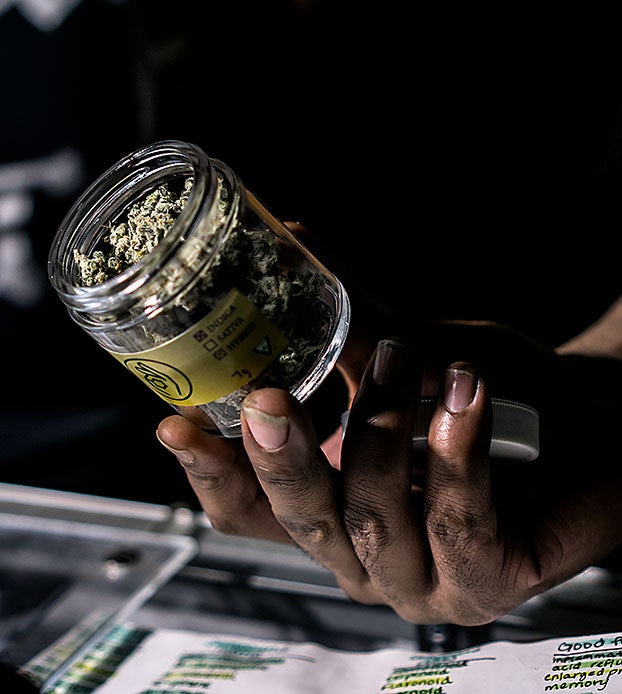There is no more denying it – cannabis should be legalized. This feeling is shared almost unanimously among Americans, with 91% of those polled in a 2021 Pew poll saying cannabis should be legal for medical use, and even a strong majority (60%) favoring both medical and adult-use.
No doubt this is an exciting time to be a cannabis consumer. Cannabis is being normalized at a rate not seen since the 1960s – perhaps ever – when considered in the global context. But prior to 1996 when California declared it medicine, cannabis was illegal in every state at every level. It wasn’t that long ago that cannabis drug offenses were even counted towards harsh three-strike laws, landing far too many petty cannabis dealers in jail for life for selling a flower that is less harmful and less addicting than alcohol and cigarettes. 1
It wasn’t always this way
For nearly 100 years between 1850 and 1942, cannabis extracts and tinctures were commonly used as medication and had a formal place in what is known as the US Pharmacopeia, a compendium of information about drugs for physicians to reference. It’s also important to note that, although some states enacted bans on cannabis starting in the early 1910’s, it was not federally illegal to grow cannabis. It wasn’t until the Marihuana Tax Act of 1937 that cannabis was even formally regulated. 2
We are leaps and bounds ahead of where we were just a quarter century ago, with at least 18 states having legalized adult-use cannabis, and at least 47 with some degree of medical cannabis laws on the books, even if only for Type III cannabis, otherwise called low-THC cannabis or hemp. Yet the federal government continues to define THC as a Schedule I substance; a substance, which to qualify for inclusion on Schedule I, must have no currently accepted medical use and pose a high risk of abuse.
But that is changing, and fast. Washington DC is now churning with chatter about cannabis legislative reform, as represented by the MORE Act and the States Reform Act in the US House of Representatives and in the US Senate, a discussion draft of The Cannabis Administration and Opportunity Act (CAOA).
The cannabis reform bill of the hour
In short, the CAOA is a sweeping federal cannabis reform bill aimed at descheduling cannabis, creating a tax structure for legal cannabis, and also setting up the framework for a more standardized industry. Perhaps most importantly and the most appealing aspect of the CAOA, there is a strong focus on social equity, restorative justice, and opportunities for those wronged by the senseless war on cannabis.
On the surface, the CAOA seems great, and really as far as reforms go, is a substantial shift in the right direction. But upon further inspection, there are a few gaps that would need to be addressed to ensure that cannabis works for patients and not corporations.
The drafters of the CAOA seem to have forgotten that medical cannabis programs are what has brought us to this point, as there is almost no mention of medical cannabis in the CAOA aside from a small section where they propose Veterans Association doctors should be allowed to engage in the recommendation and discussion of medical cannabis.
This bill assumes that federal standards for medical cannabis are not needed because patients are protected under state medical cannabis programs, but that logic is flawed. As political pendulums swing, so too can state law, which we continue to see all around the country. If federal policy ensuring medical cannabis patients rights is not in place, rest assured there will be patients who struggle and suffer unnecessarily to get access to medicine and appropriate guidance on that medicine. Medical rights are ensured for all other medications, and medical cannabis should not be different.
This sentiment, which is encouraged by the tone of CAOA but concerned about the preservation of medical cannabis, is held by many medical cannabis practitioners.
What do the experts say?
Jordan Tishler, MD is a specialist in cannabis-based medicine and is the founder of the Association of Cannabinoid Specialists. When asked about the pros and cons of the CAOA he responded:
“I think the bill was a great boon for industry and for social equity. My view of what needs changing isn’t so much to remove those aspects as to address the fact that no attention has been paid to health equity.”
Health equity means patients deserves the same assurances as other medication, which includes access to untaxed cannabis medicine, a framework for insurance coverage, access to clean, tested, and affordable cannabis medicine, access to trained healthcare professionals who are well versed in cannabis, and the ability to travel with their medication regardless of how a particular state feels about it. To Tishler, this framework even includes a prescription written by the physician in the same way that would be written for any other medication, meaning that is only to be altered or deviated from if first discussed with the writing physician.
Dr. Patricia Frye, a board certified pediatrician, integrative practitioner, and director of education for the Society of Cannabis Clinicians, has concerns about the tax structure and enforcement proposed by CAOA. Her concerns stem from a taxation structure that could put up to 25 percent tax on cannabis producers, driving up the costs to patients and encouraging them to seek out cannabis from alternative, often unscrupulous markets.
“Regardless of medical or adult use, this will push prices to make it less affordable for lower income communities, which will again encourage federally illegal activities, i.e selling home grown.”
Frye was encouraged by the research section of the CAOA, which specifically directs more research into the health effects and benefits of cannabis use, as opposed to the more typical anti-cannabis study that easily gets federal funding. There is also a specific mention of research into finding a way to measure cannabis intoxication to improve roadway safety, a much needed tool to improve safety during this 20th century THC renaissance.
Home-grow rights is another aspect of concern raised by healthcare professionals putting the livelihood and empowerment of patients over profits.
Rachel Parmelee, MSN, RN is nurse educator and executive board member of the American Cannabis Nurses Association and has seen first hand how patients can benefit from growing their own.
“There is something therapeutic about growing your own medicine,” Parmelee said. The CAOA makes no mention of the legality of growing your own cannabis, and as such it should be addressed in any future drafts. “Not only is growing your own cannabis therapeutic, it is also a way to insulate patients from market pressures that can be created in highly restrictive states.”
Alan Ao, PharmD, President of Plants and Prescriptions, board member of ISCPH, and special advisory board member of the Association for Cannabis Health Equity and Medicine (ACHEM) feels that we need to be setting up a system that treats cannabis more like medicine, including preparing for cannabis and cannabis-related care covered by health insurance. Of course this would require Centers for Medicare & Medicaid Services to collaborate with third-party payers to create a medical cannabis framework.
“This would create specialized classes of licenses that can be issued to existing healthcare clinics, cannabis processors, and dispensaries/pharmacies to specifically handle medical patients, cGMP-grade cannabis products, and execute fee-for-service billing.”
The CAOA is a tremendous step forward towards where we need to be on federal cannabis policy, but it did not quite hit the mark on medical cannabis. Certainly the Schedule I status of cannabis/THC cannot stay as is, but the way in which we redefine cannabis’ role in medicine is a critical next step for the industry.
By taking feedback from the frontline healthcare workers in cannabis medicine, we can build on the good of the CAOA, and take the opportunity to craft public policy that ensures equity, promotes prosperity, and protects medical cannabis from the forces of commoditization.
Sources
- Lachenmeier, D., Rehm, J. Comparative risk assessment of alcohol, tobacco, cannabis and other illicit drugs using the margin of exposure approach. Sci Rep 5, 8126 (2015). https://doi.org/10.1038/srep08126
- Bridgeman MB, Abazia DT. Medicinal Cannabis: History, Pharmacology, And Implications for the Acute Care Setting. P T. 2017;42(3):180-188. The Food, Drug, and Cosmetic Act of 1906 mandated labeling requirements for over-the-counter sales of cannabis.. John Vigorito, Creating Constitutional Cannabis: An Individual State’s Tenth Amendment Right to Legalize Marijuana, 46 U. Tol. L. Rev. 221, 223 (2014)
Sign up for bi-weekly updates, packed full of cannabis education, recipes, and tips. Your inbox will love it.

 Shop
Shop Support
Support
















